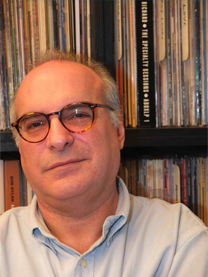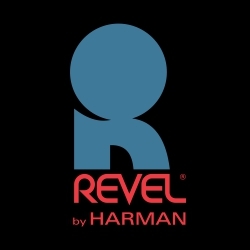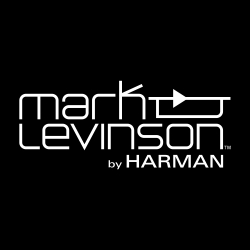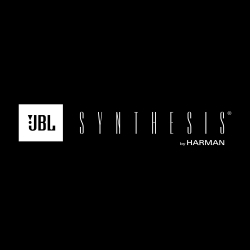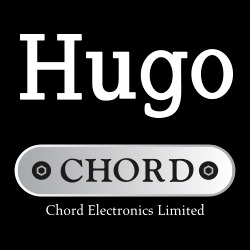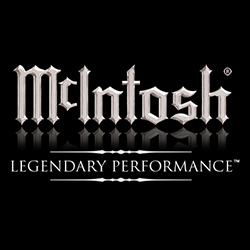Frank Sinatra and Frank Bruno have had comebacks, so why not a hi-fi company? Witness the return to form of one of the industry’s original leaders.
by Ken Kessler
Euthanasia has been the preferred practice when it comes to dealing with ailing companies, but some hi-fi brands have learned to fight back. We who love hi-fi enough to cherish its past have noted with sadness the disappearance of far too many great names, usually because of the ruthlessness of giant, adoptive parent companies which don’t know the worth of the logos they’ve acquired.
Enter David Day, who has now resuscitated not one but two legendary companies. Day, still under 40, eccentric and too weird a dresser to strike anyone as the type to appreciate an historical legacy, has emerged as the Patron Saint of Anachrophiles. Just when the high-end community thought that the legendary Sequerra FM tuner was gone forever, Day bought the remnants of the company, including the name and all of the assets, refurbished the line, introduced new designs and restored the brand to its rightful position at the top of the heap. His methods were enlightened in a way that no faceless corporation can understand.
First he formed a new company called Davidson Roth in Chicago, the made-up name rumoured to pay homage to a macho American motorcycle (which his fiancée won’t let him own) and to a nice Jewish boy who helped form the Mafia. To prevent confusion, he renamed the tuners Day-Sequerra. And then, in a display of selflessness unknown in this industry, Day gave back to Dick Sequerra the rights to his name so Sequerra’s present company could use it. (Which explains why there are now two distinct companies producing hi-fi components with ‘Sequerra’ on the badge.) And Day chose to service any Sequerra tuner regardless of vintage.
Day’s previous involvement in hi-fi being strictly of a civilian nature, he moved straight into the high end, promptly established himself as One Who Gives A Damn, and formed alliances with the likes Krell, with whom he co-exhibited his products at CESes. The highest compliment which could be paid to Day’s achievements was made by Krell’s Dan D’Agostino, who decided not to produce a Krell-badged tuner. Why bother, with the Day-Sequerra being so perfect a choice for his customers? And Day acknowledged the gesture by offering his (normally gloss black) tuners with a Krell-grey optional front panel.
Meanwhile, down in Connecticut, another high-end giant was doing his part for the Audio Preservation Society. Mark Levinson, the man credited by many as having invented the modern high-end movement, added a line of speakers to his Cello range, the first based on a near-forgotten model from one of the most venerable of all hi-fi brands: Acoustic Research’s AR-LST.
You have to be old enough to remember the days of Labour governments to recall this product, known for staggering performance which couldn’t be accessed by the amplifiers of the day. Levinson revived the speaker, knowing that modern amplifiers such as his Cellos could milk the speaker for all it was worth. And, to everyone’s surprise, Acoustic Research was more than happy to let this crazed audio maven raid its parts bin.
A few miles north of the Cello factory, AR had gone from being one of THE pioneering brands of the 1950s and 1960s to Yet Another Mass-Market Speaker Maker in the 1980s. Periodically, the spirits of Villchur and Kloss would waft through the halls and the company would astound all by reissuing the world’s first great suspended belt-drive turntable, or by demonstrating a digital room equalizer while other companies were still figuring out how to get CD players to work. But the parent company and the management could have been running a brand called MacDonald’s for all that the history mattered.
The company founded in 1954, the company which helped countless strapped-for-cash audiophiles to find happiness, the company which once had one out of every three speaker sales in the USA (yes, over 30% of the entire American market), the company which gave birth to more brands that any other – Advent, KHL, NHT and Boston Acoustics to name but four – was in peril of joining other revered makes in that hi-fi shop in the sky. Then there came a series of coincidences, events, flukes — call them what you will – that stopped the rot.
AR was acquired by a benevolent new owner that had hi-fi in its blood, International Jensen having nothing to do with electric toothbrushes or luggage or pocket calculators. And Jensen, unlike any other giant hi-fi Monopoly player I can name, installed a new management team and told them to take AR out of the supermarkets and put it back where it belongs, in the specialist shops. Which is easier said than done. Like finding work for an ex-con.
Meanwhile, back in Connecticut, Mark Levinson was still using AR drivers in the Cello speakers. He happened by the factory one day when an AR employee said that Mark really must hear the company’s new budget speaker, which is sort of like asking Nigel Mansell to take a spin in a new Ford. Mark, game for a laugh, auditioned the prototype of the M1 attached to a set of his own amplifiers, which sell for about the same as a 40ft container load of M1s. He was (as they say) blown away, wrested the lone pair from AR and took them down to his showroom in New York, to see if he could duplicate the weirdest example of synergy in recent memory.
It wasn’t an accident. It was more like a miracle, $20,000’s worth of Cello making a couple of hundred bucks’ worth of ARs sing like high-end behemoths. So taken was Levinson that he hosted, with AR, a press day for 20 cynical hacks at his New York premises. (See HFN/RR passim.) The rotting mutterers came, they saw, they listened. And they did not believe what they heard. It was a chorus of, ‘Okay, where’d you hide the subwoofer.’ Mark smiled, the AR crew glowed. And the M1 made history by turning the high-end formula upside-down.
Meanwhile, back in Chicago, David Day was making Day-Sequerra tuners.
Here’s where logic and reason were thrown to the wind. Levinson, probably the best salesman since PT Barnum or John DeLorean, convinced AR that it had the makings of a new kind of company, high-end but true to the original Villchur concept of real-world prices for out-of-this-world performance. Mark outlined a whole range of products which should deliver five-figure performance for four figures, a way to fill the gap between the Haflers and Adcoms and PS Audios at the entry level and the Krells and Cellos up in stockbroker territory. And he offered to be part of it. And then he introduced AR to David Day.
AR liked Day and Day-Sequerra so much that they bought company. And, despite his penchant for using the same tailor as Prince, AR put David Day in charge of engineering and design for the project which could bring back the days of the AR-3a, the 4ax and LST.
Day, whose talents also include song-writing (with Warren Zevon), cooking and wine selection, has enough self-esteem to know his own limitations. Given the Herculean task of turning AR from also-ran back into leader of the pack, Day chose to ignore the Not Invented Here Syndrome by delegating various aspects of the project to those best suited for each role.
Mark Waker, a British ex-pat who joined AR before Jensen acquired it, became the resident audiophile, project booster and marketing whizz. Mark Levinson’s company provided the blueprint for the system and the circuitry for the sophisticated, Palette-like tone control unit. Dan D’Agostino designed the amplifier. And Day produced the pre-amp and loudspeakers.
So was born the AR Limited series, the first ‘multi-cultural’ high-end system to be produced by the new AR. And the company has more than just money invested in the system: it is offering up for public approval its very reputation.
AR has been so methodical about its rebirth that you’d think they were based at the Hammersmith Hospital. First, the company established the Holographic Imaging Series, of which the M1 is a key model. Then, the company expanded the Partners range of powered mini-speakers to include models for the soon-to-explode personal computer multi-media market. Then a new series of bread-and-butter products for the company – affordable loudspeakers – appeared as the AR Classics, systems using the ‘virtual point source’ technology the company first employed in the late 1970s. Lastly, the company gutted and completely redesigned the factory for utter efficiency and self-sufficiency.
And so the stage was set for Day’s second act of salvation. Launched to the trade in September at the Hi-Fi Show at Heathrow, the Limited system was seen to juggle the innovative with the traditional, right down to the re-introduction of the original AR logo in slightly tweaked form.
Visitors saw electronics with styling which suggested both 1965 and 1995, grey fasciae with bare-metal highlights, chunky, studio-chic knobbery and a finish which says that they can still build ’em like they used to. The speakers – floor-standing monsters with overkill crossovers – featured open architecture, bi-wiring/bi-amping capability and the promise of unburstability. The system offered every traditional AR virtue alongside every post-modern high-end detail you could name, including a buffered passive pre-amp section, amps stable into stupid loads, balanced operation throughout and that marvellous, Cello-designed tone-shaping system at a knock-down price. And more is promised, including a tuner based on the Sequerra, smaller speakers and amplifiers, a subwoofer housing an 18in driver, a CD player with user-changeable DACs and the latest Philips transport, a phono stage and more.
Do you detect a whiff of excitement from KK? Could it be that his soft spot for hi-fi companies nearing the age for free bus passes has turned him into an optimist? Let me leave you with but a few thoughts. One: I like nothing better than seeing 11th hour rescues, especially of venerable firms (e.g., I applauded when KEF was saved). Two: I have never witnessed such care and attention to detail, such quasi-military strategy applied to a hi-fi project which is concerned as much with the past as the future. Three: I heard the bulk of this system at Day’s home belting out 97dB at 3m with absolutely no clipping or break-up. Which leads me to the cliff-hanger.
Although the Limited products will reach the shops by the time this hits the stands, we’re not publishing the review until June. Or, to put it another way, we’re taking more time on this review than any other I can name because we have to remove the emotion from the equation. Even so, I’m praying that Day and AR have succeeded. Why? Because their success may convince other great names which have lost their way to look to their pasts. After all, the Anachrophile would hate to think that his pleading has fallen on deaf ears.
© Ken Kessler 1992/2016
